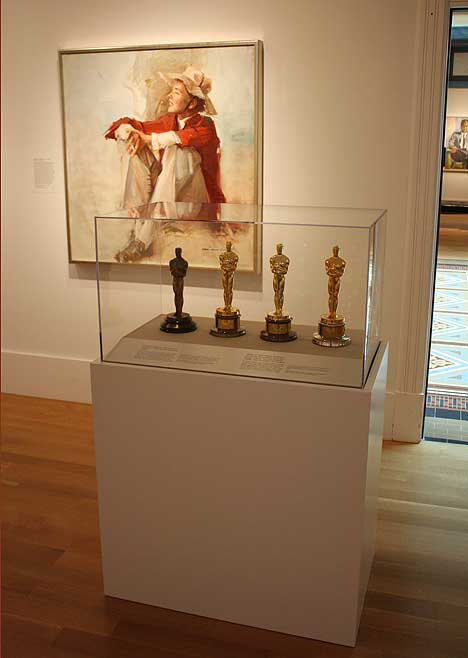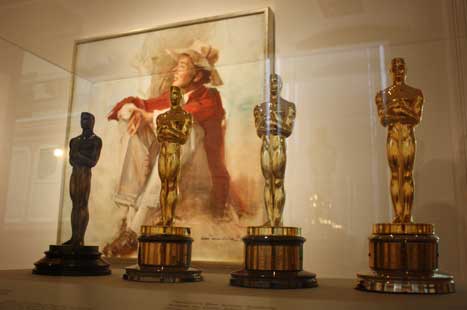Now On View: Katharine Hepburn’s Oscars

Bursting into Hollywood’s dream factory, Katharine Hepburn was an ironic misfit, sporting a highly stylized personality and headstrong independence that boldly announced a new kind of female presence on the silver screen. Her performances in Morning Glory (1933), Guess Who’s Coming to Dinner (1967), The Lion in Winter (1968), and On Golden Pond, (1981) won her four Best Actress Academy Awards, a record that still stands today. The National Portrait Gallery recently acquired the four Oscar statuettes as a gift from the Katharine Hepburn Estate; they are now on view in the “Twentieth-Century Americans” gallery on the museum’s third floor, next to a 1982 portrait of Hepburn by artist Everett Raymond Kinstler.
Katharine Hepburn was honored first for her role in Morning Glory (1933). This statuette is a legend in itself. Although the origin of the term “Oscar” is debatable, its first use was in an article by entertainment columnist Sidney Skolsky. Reporting on the ceremony and stumped on the spelling of “statuette,” the term that was commonly used to refer to the award, Skolsky instead wrote that Hepburn “won the Oscar for her performance as Eva Lovelace in Morning Glory.”
The Oscar statuette was designed in 1927 by MGM art director Cedric Gibbons and sculpted by George Stanley. The figure stands on a film reel with five spokes, signifying the original branches of the Academy of Motion Picture Arts & Sciences: actors, directors, producers, technicians, and writers. The pedestal was raised in 1945, giving the Oscar a height of 13 ½ inches; it weighs 8 ½ pounds. Rather than its original gold-plated bronze, it is now composed of the alloy britannia and coated in twenty-four-karat gold. These design changes are why Hepburn’s first Oscar, for Morning Glory (1933), appears smaller and less opulent.
Learn more about Katharine Hepburn by visiting the online exhibition for "KATE: A Centennial Celebration.” This exhibition was on view at the National Portrait Gallery from November 2, 2007, to September 28, 2008.
